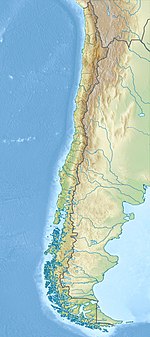| Navidad Formation | |
|---|---|
| Stratigraphic range: Early-Mid Miocene | |
| Type | Geological formation |
| Underlies | Licancheu Formation |
| Overlies | Paleozoic granitic basement Punta Tocopalma Formation |
| Thickness | 100–200 m (330–660 ft) |
| Lithology | |
| Primary | Sandstone, siltstone, conglomerate |
| Other | Coquina |
| Location | |
| Coordinates | 34°00′S 71°48′W / 34.0°S 71.8°W |
| Approximate paleocoordinates | 34°12′S 69°42′W / 34.2°S 69.7°W |
| Region | Valparaíso Region O'Higgins Region |
| Country | |
| Type section | |
| Named for | Navidad |
| Named by | Darwin |
| Year defined | 1846 |
Navidad Formation (Spanish: Formación Navidad) is a marine Neogene sedimentary formation located in Central Chile.[1] The formation is known for its diverse and abundant fossil record and is considered the reference unit for the marine Neogene in Chile.[1][2] Originally described by Charles Darwin in 1846 the formation has attracted the attention of numerous prominent geologists and paleontologists since then. As a key formation Navidad has been subject to a series of differing interpretations and scientific disputes over time.
